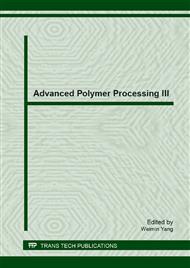p.542
p.547
p.553
p.559
p.564
p.568
p.572
p.576
p.581
Fatigue Analysis of Linear Vibrating Screen with Different Surface Roughness
Abstract:
The multiaxial stress is acted on the sidewall and beams of the large linear vibrating screen. So the critical plane method is used for calculating the fatigue lives of the large linear vibrating screen. The logarithm fatigue lives nephogram is drawn and the logarithm fatigue lives of large linear vibrating screen are analyzed. The local logarithm fatigue lives for different surface roughness of the vibrating screen is calculated and the results shows that the fatigue lives decrease quickly when the surface roughness increases.
Info:
Periodical:
Pages:
564-567
Citation:
Online since:
July 2013
Authors:
Price:
Сopyright:
© 2013 Trans Tech Publications Ltd. All Rights Reserved
Share:
Citation:


